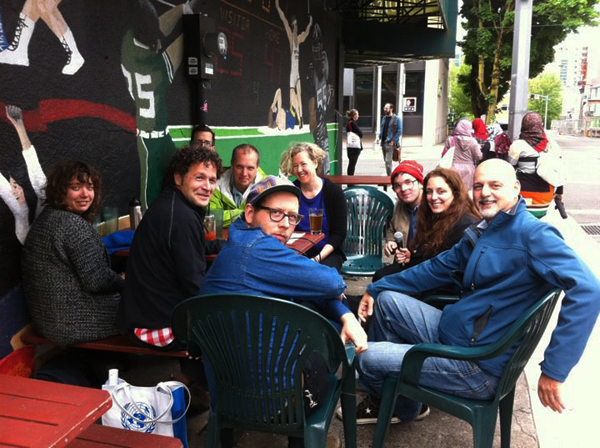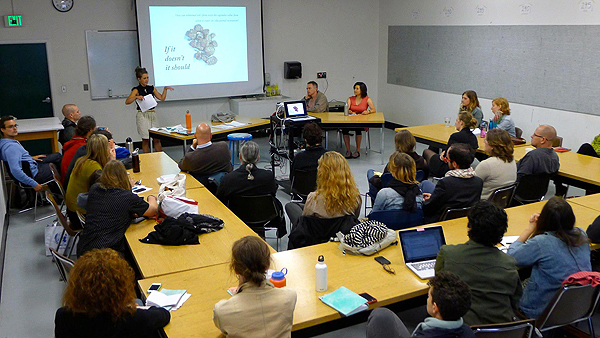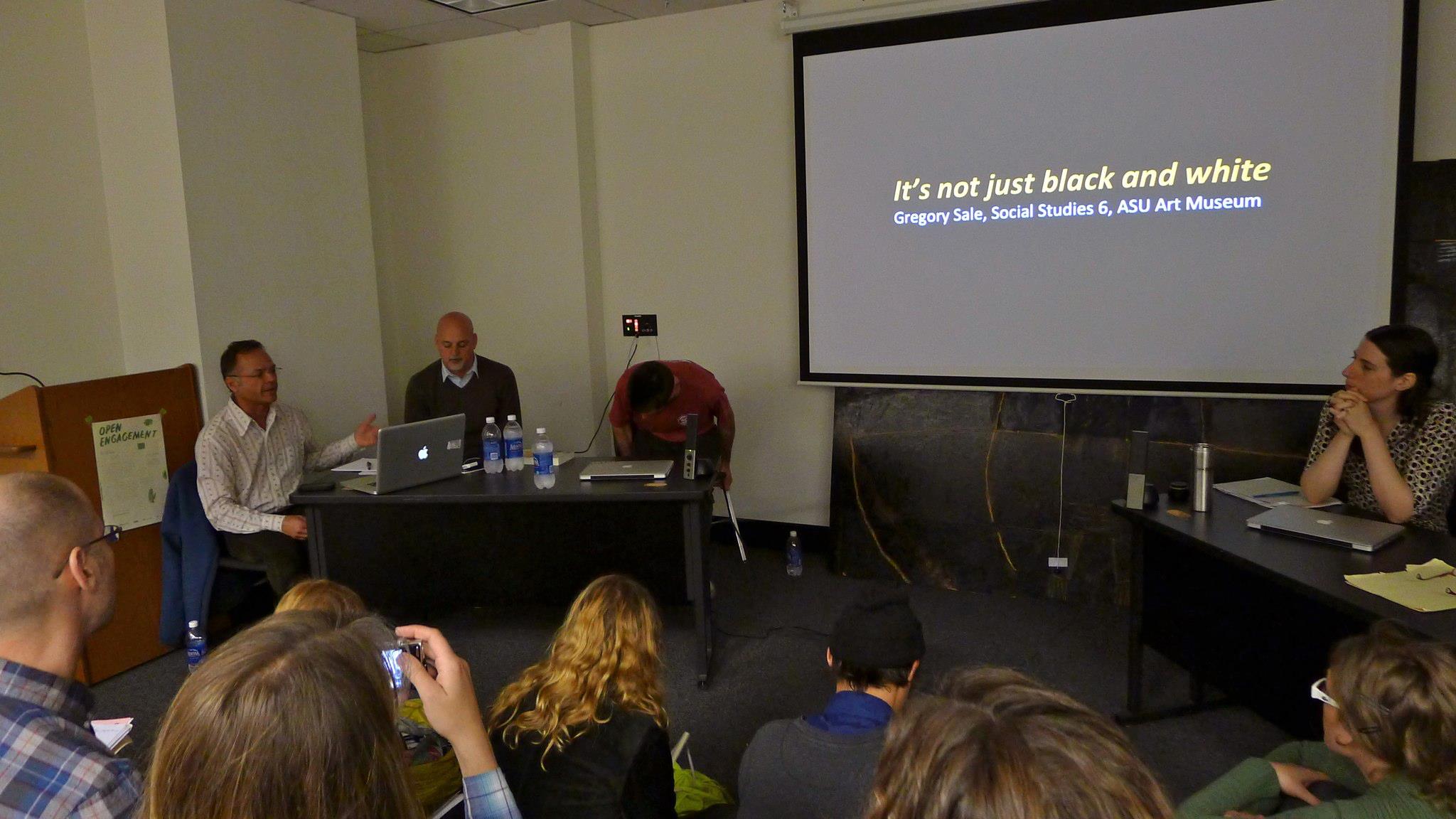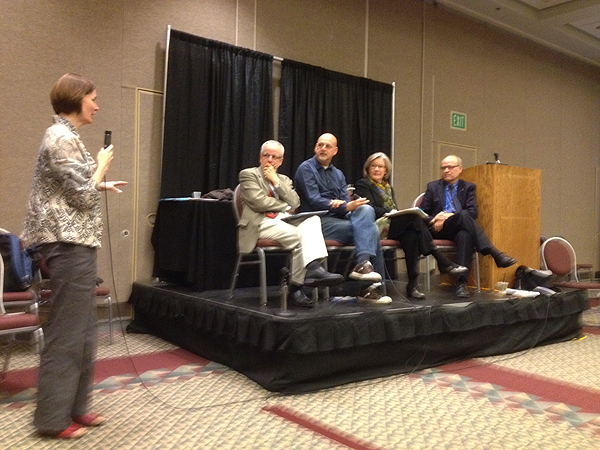Open Engagement, AAM, Social Practice and a Forward Vision @ Grand Central Art Center
Social Practice is a major focus of our Forward Vision at Grand Central Art Center (GCAC), so we were honored by an invitation to participate in the Open Engagement conference in Portland, Oregon (May 18-20). GCAC was represented on two panels by Director/Chief Curator John D. Spiak, which included:
It Turns Out There Is Room For Everyone: Museums and Social Practice – with panelists Dominic Willsdon (SFMOMA), Allison Agsten (Hammer Museum), Rení© de Guzman (Oakland Museum of California), Stephanie Parrish (Portland Art Museum) and John D. Spiak (Grand Central Art Center). Moderated by Harrell Fletcher (Portland State University).
and
Prison Communities: You Can’t Arrest Your Way to a Solution. Social Practice Engaging the Criminal Justice System – with panelists Gregory Sale, John D. Spiak, Pete Brook, Rachel Marie-Crane Williams and Julie Perini.

Bernie Díaz (Faculty @ SMU’s Meadows School of the Arts), Ariel Gentalen, Karla Monterrey, Shannon Jackson (Director of ARC @ UC Berkeley), Carlin Boyle
We were able to encourage, with the help of GCAC Artist in Residence Jules Rochielle, a few California State University Fullerton students, a faculty and staff member to attend the conference. Those in attendance included: CSUF students Carlin Boyle, Ariel Gentalen, Karla Monterrey; CSUF faculty member Gretchen Potts; and CSUF staff member Mylan Chacon. The conference allowed the opportunity for these individuals to connect with national figures of the art world, including artists, theorists, educators and curators. It was clear that these individuals were truly inspired by the experience. We are sure this will have a major impact on GCAC and the CSUF College of Art, especially starting next semester, as these individuals are playing key roles on the campus community – Karla leading CSUF Arts Week this coming year; Ariel leading the CSUF Arts Inter-Club Council; and Carlin through her Evoke Unity efforts.
Three weeks ago, Spiak also represented GCAC through two panels at the American Association of Museums Annual Conference in Minneapolis, Minnesota, which included:
Getting into the Bones: Museums, Dance and Social Action – with panelists Gregory Sale (Arizona State University), Robin Conrad (Fullerton College), Elizabeth Johnson (Herberger Institute for Design and the Arts) and John D. Spiak (Grand Central Art Center)
and
New Roles/New Culture: Tackling Tough Topics and Engaging New Audiences – with panelists Thomas M. Finkelpearl (Queens Museum of Art), Emily F. Zimmern (Levine Museum of the New South), Robert Garfinkle (Science Museum of Minnesota) and John D. Spiak (Grand Central Art Center). Moderated by Kris Morrissey (Director, Museology Program, University of Washington).

Jacob Wick, Paul Ramirez Jonas, Abigail Satinsky, Randall Szott, Duncan MacKenzie, Sal Randolph, Tania Bruguera, John D. Spiak
The inspiration and knowledge these conferences provided inform this institution as our Forward Vision document develops and becomes more refined.
The in-progress Forward Vision for Grand Central Art Center focuses on the belief that the key to success in Social Practice Residencies is complete honesty, trust and openness by the institution, curator and artist with all potential collaborators and participants. GCAC is open to exploring, through artistic practice and conversation, the complexities of society – acknowledging that we may raise more questions than perhaps answer. This institution is open to flexibility and adjustment throughout a project/residency as envisioned by the artist, leaving the opportunity for new discoveries to develop – creating the possibilities for even greater, successful and mutually beneficial outcomes for artist, institution and collaborator. We use the term “successful” loosely, as we acknowledge that failure of a process also brings knowledge. These rules should apply to any institution exhibition, program or project, but they are even more essential when working with community and artists through Social Practice residence. Without an honest approach, trust cannot be secured to build connections with diverse individuals through an artist’s vision.

Shannon Jackson (Open Engagement Keynote)
We also acknowledge the kinds of results that often occur at the conclusion of a residency or Social Practice based project are not always easily measured, in the traditional sense. For example, attendance figures, tour numbers and budgets may not be the most appropriate measures of “success.” Unfortunately, these are the most common types of statistics that funders and agencies require in grant reports, usually due immediately upon completion of the project.
GCAC understands that many projects in Social Practice should not, and can not, be limited by a set timeline for completion. Therefore, it is our goal to provide an artist time needed to realize their vision. Often the first question asked by individuals when inquiring of our Artist in Residence program is “how long is each residency?” To this we will answer, “we do not know,” as each will be determined by the artist, their project and their collaborators working through GCAC. We also understand that even though a project might be considered complete, impact of that project, and even the project itself, may continue beyond the artist and institution.

If It Doesn’t It Should (Open Engagement Panel) – Ted Purves, Harrell Fletcher, Cassandra Thornton
GCAC will look at traditional and standard matrix measurements for each project, but we will also measure, validate and share the success, and/or failure, of each Social Practice Residency through the following: gathering of personal stories and testimonials (artist, institution, organizations, community); presenting at national conferences (American Association of Museums, College Art Association, Open Engagement); creating web and print based documentation (website, blog, catalogues); writing and publishing articles in national journals (Museum and Social Issues, Art Education, Journal of Art for Life); and direct sharing with colleagues of peer institutions and through society itself.
The Social Practice Artist in Residence is just one component of our institution, but the philosophies of this program will guide GCAC in the further development of Forward Vision documents for our exhibitions, education, public programs and outreach. Their outcomes will be measured in the same fashion and be accountable to our mission as a contemporary art center. We will raise questions, allow inquire, be open to opposing view points, be challenged and/or criticized, in the hope of understanding greater society, the role of contemporary art and our shared, or unshared, experiences. It is important for us as a contemporary art center to acknowledge that we may not be able to change lives or minds, but it is our hope to change moments.


